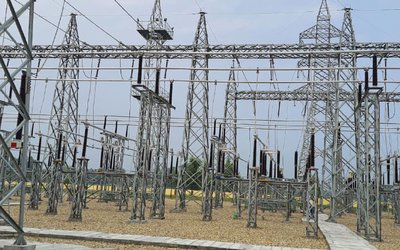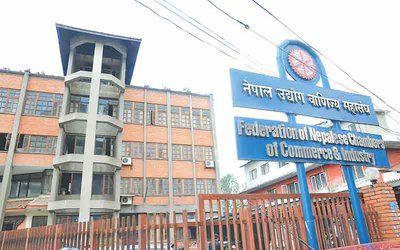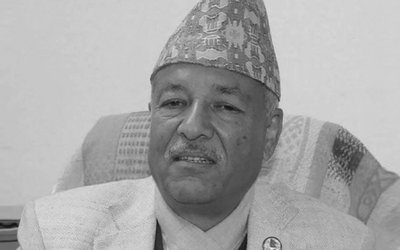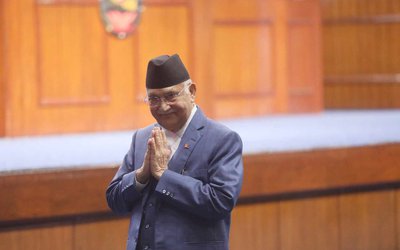
At a time when Nepal is unable to generate new employment opportunities back home, foreign employment is the only available employment option for a large number of Nepalese youth.
According to a report of the Department of Foreign Employment, every day 1,500 Nepalese are leaving for jobs abroad. As the number of young people leaving the country increases, the issues of dignity, safety and socio-economic impacts of foreign employment have come to the forefront of national debate.
One of the growing concerns of the recent times is the mortality rate among Nepalese working in foreign countries. According to a report of the Foreign Employment Promotion Board, the casualty of Nepalese has drastically increased in the recent years. According to the board, 461 Nepalese died abroad in the last six months.
The reported death toll is understandable. As there has been an increment in the number of Nepalis going abroad in the recent years, there is also an increase in the death toll.
According to Foreign Employment Promotion Board, Malaysia, Saudi Arabia and Qatar are three countries with the highest number of deaths of Nepali workers. Similarly, these three countries alone provide employment opportunities for over a million Nepalese, that is, half of all those employed abroad. With 300,000 in Malaysia, Qatar is providing employment to almost more than half a million Nepalese. Likewise, over 200,000 are in Saudi Arabia.
However, the Board did not elaborate how the Nepalese died in foreign countries, whether due to accidents or other diseases. There is a need to conduct a study on what is the mortality rate back home. Had they lived in Nepal, would they have survived? What can prevent the death of Nepalese in the foreign countries? Only after intense study on mortality ratio, one can say anything about the overall status for sure.
The casualty of Nepalese has also been reported in Dubai, Kuwait, Bahrain and South Korea, Japan, Oman and Russia. Although over half a million Nepalese are also working in India, there is no record of their casualty there.
Among the dead, 458 are male and three female. The data show that 77 people died owing to various reasons. Among the dead, 119 people died natural deaths while 151 succumbed to health hazards and strokes, including cardiac arrest.
The death toll also includes people who committed suicide. At least 54 Nepalese reportedly killed themselves while 52 others were found to have died on-the-spot in course of work. It is said road accidents have claimed the lives of 46 Nepalis.
The government, however, has not been able to keep tab on the death toll of the Nepalese working in India and working illegally in other countries as it has no exact data and details of such migrant workers.
Raghuraj Kafle, Executive Director of the Board, opined that the statistics provided by the employment agencies could have been fudged to avoid the legal hassle that comes along with the death case. Yearly, some 500,000 youths have been flying abroad for employment.
The Board, as a support, provides Rs 300,000 to the families of the workers who die in the foreign lands during the work whereas it offers scholarship to one child of the deceased.
There has been an increment in the number of Nepalese going abroad in the recent years. So is the death toll.
“ Without making an intense study, we cannot simply draw the conclusion on casualties,” said Dr. Ganesh Gurung, at a program recently organized by Institute of Foreign Affairs and supported by Friedrich-Ebert Stiftung.
Death in accidents is also growing in Nepal. At a time when casualties in Nepal’s road accidents in the last six months were over 1,500, road accidents are emerging as one of the major causes of trauma. Experts have estimated that about 2,500 deaths occur annually due to road accidents.
According to Census Report 2011, one in every four households (25.42%) or 1.38 households had reported at least one member being absent or living out of the country. The census found that 1921494(762.181 in 2001 and 328470 in 1961), out of absent population, more than 610000 were in India.
The recently published Labor Migration for Employment :A Status Report for Nepal 2013/014 accounts for migrants seeking employment in countries other than India. According to the report, around 2.23 million labor permits were issued between 2008/09 to 2013/014.
Those obtaining permits increased from 219,965 (25% female) in 2008/09 to 521878 ( 15% women) in 2013/014. Although the social cost of migrant workers are very high, there is no alternative for many job seekers.
Nepalese working abroad are estimated to have sent Rs. 530 billion in 2013 which is lower than the government's annual budget. It is estimated that the remittances amounted to around 29 percent of GDP in 2013, one of the highest in the world.
“ Nepal’s economy is so much addictive to the remittances that any implications in the labor market are a great threat to Nepal’s economy. From poverty reduction to growing service industry, remittances have played a major role,” said Dr. Shanker Sharma, former vice chairman of National Planning Commission.
Poverty declined from 41 percent in 1996 to 25 percent in 2011. This is due to the remittances. Remittance helped capital formation also. It also supports Nepal’s foreign exchange reserve. Nepal’s 56 percent households receive remittances.
Although the downfall of oil prices does not have immediate threat for foreign employment, it does pose a long term threat. Despite the lurking threat, the government is yet to prepare any contingency program in case of crisis.
Social Costs
With over 2.5 million populations abroad, Nepal can make a lot of difference, given it can utilize their skills and monies.
What Nepal can do is to make the system more systematic, transparent and workers friendly so that they can be treated with respect. The message of a half-day policy discussion was clear the migration is needed for development and it should not be for exploitation and rights violation.
Given the growing casualty, the time has come for Nepal to make it just a matter of choice and set safety standard as well. Given the unstable political scenario, with the possibility of generating employment bleak, Nepal will continue to find foreign employment as a safety valve. Growing insecurity and lack of safety back home will also prompt more Nepalese to go for foreign employment.
- IME GROUP: Expands Into Paper Industry
- Mar 24, 2025
- CPN UML: Instigated By India
- Mar 23, 2025
- ADB’S CHIEF ECONOMIST: Nepal Reduces Poverty
- Mar 11, 2025
- FM DR. DEUBA: A Successful Visit
- Mar 11, 2025
- MD GHISING: Target Of Personal Grudge
- Mar 09, 2025















